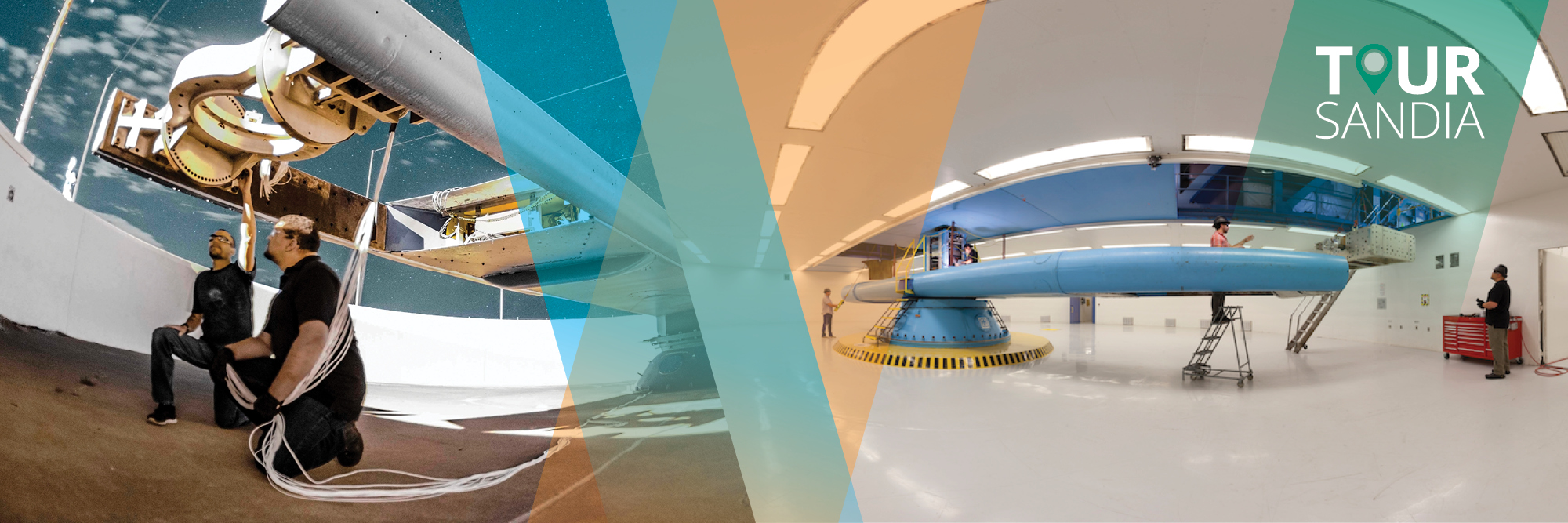Overview
The Large Centrifuge Facility, or Superfuge, is located at Sandia’s New Mexico site, along with a fleet of other large environmental test facilities. Originally designed and built to test weapon components and systems in environments simulating missile launch through atmospheric reentry, the facility’s expanded mission includes customers testing aircraft flight and satellite components.
The facility includes two centrifuges that can subject test items to inertial forces up to 300 g. The older, outdoor centrifuge has a 35-foot radius arm that can accelerate a test unit weighing up to 10,000 pounds. The slightly younger, indoor centrifuge’s 29-foot radius arm can hold up to 16,000 pounds.
Each centrifuge has state-of-the art data collection and communication capabilities, including an instrumentation panel at the center of rotation with up to 200 channels of slip rings for on-board power, coax, Ethernet, RF and fiber optics. While permanent on-board data collection systems can capture up 100 channels; custom systems can be integrated into the control room or on-board either centrifuge; each with standard 19” racks. Standard or high-speed digital cameras may also be integrated into tests. In terms of test capabilities; simple acceleration-only, vibration plus acceleration (vibrafuge), and vibration plus acceleration plus rotation plus spin (superfuge) tests may be performed on payloads of various size and mass. Customers can obtain a single load test or a series of complex performance highly instrumented test series with different configurations.
Superfuge Complex Capabilities
The 29' Underground Centrifuge offers
- 300g Maximum Acceleration
- 16,000-lb. Maximum Payload Capacity
- 1.6 Million g-lb Capacility
- 0.1 - 1.5 g/sec Onset and Decay Rates
- 200 Copper, Coax and Fiber Slip Rings
In contrast, the 35' Outdoor Centrifuge offers
- 245g Maximum Acceleration
- 10,000-lb. Maximum Payload Capacity
- 450,000 g-lb Capacity
- 0.1 - 0.75 g/sec Onset and Decay Rates
- 50 Copper, Coax and Fiber Slip Rings
